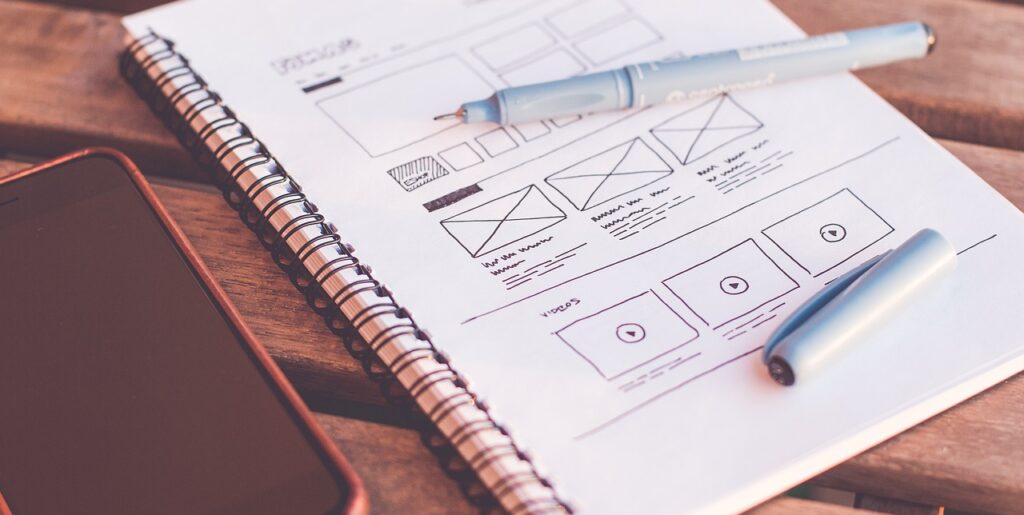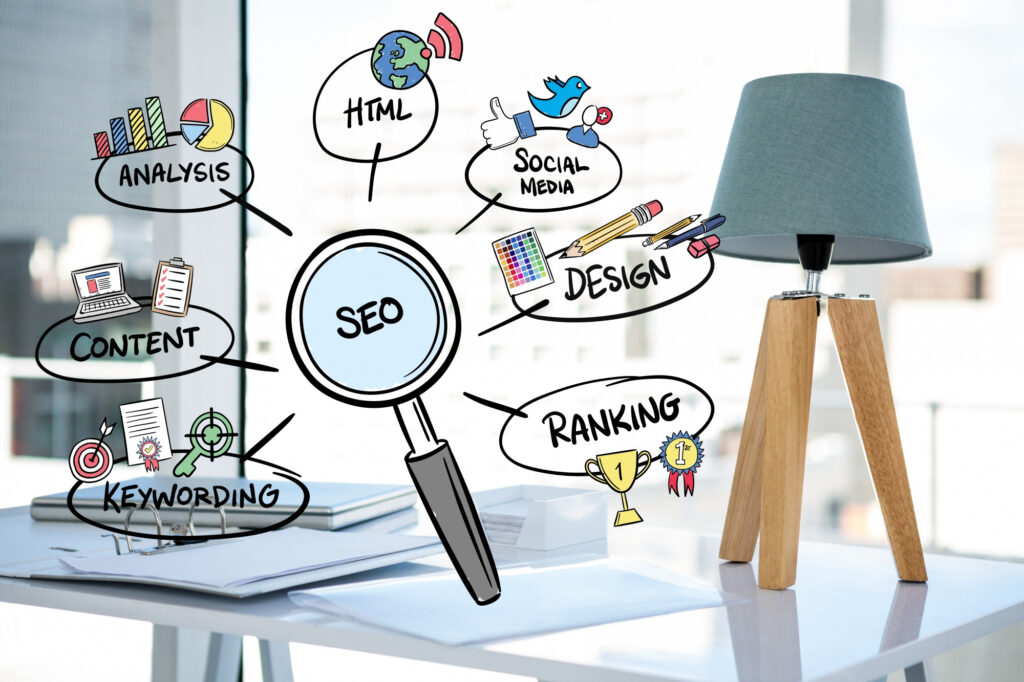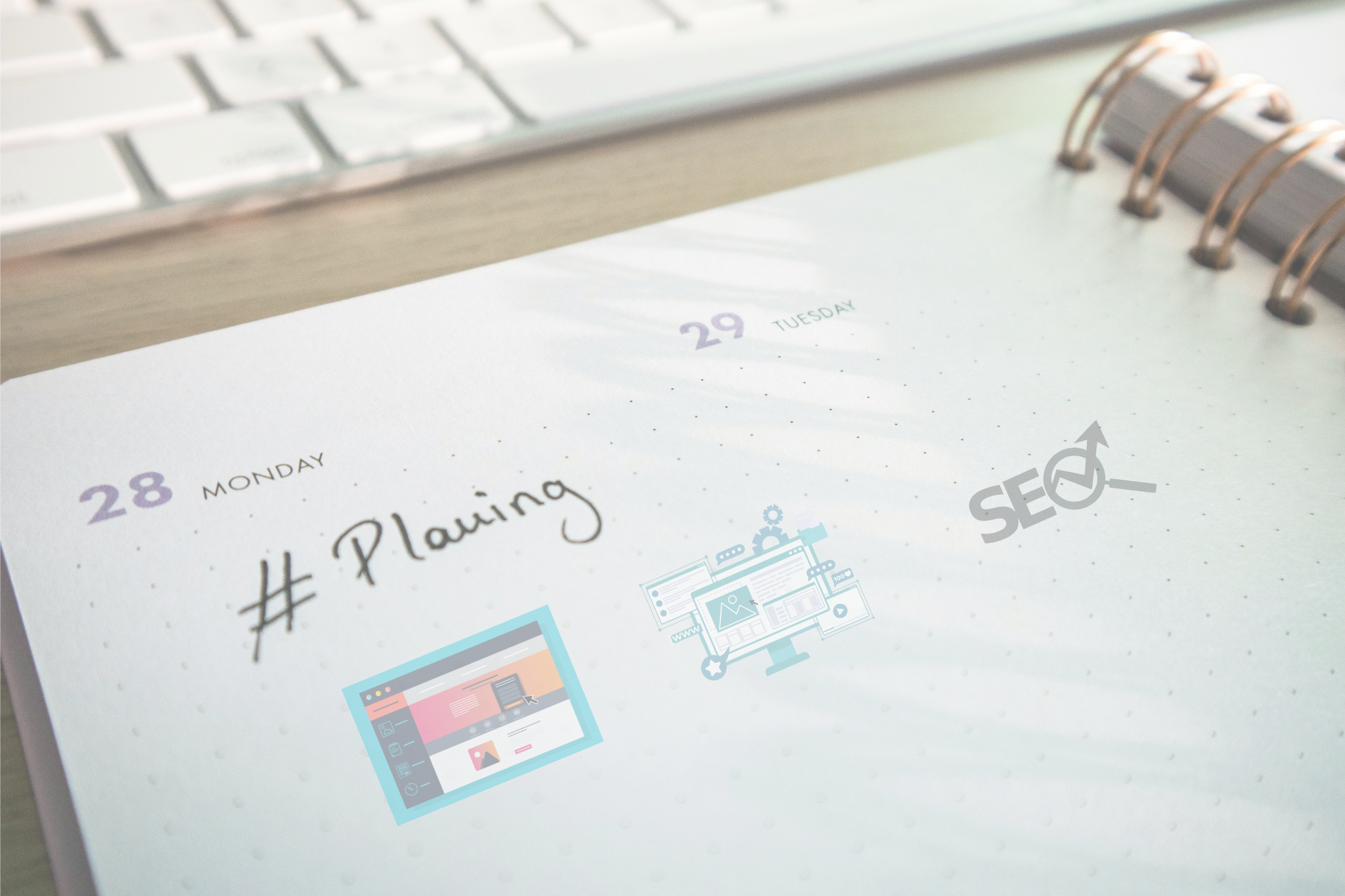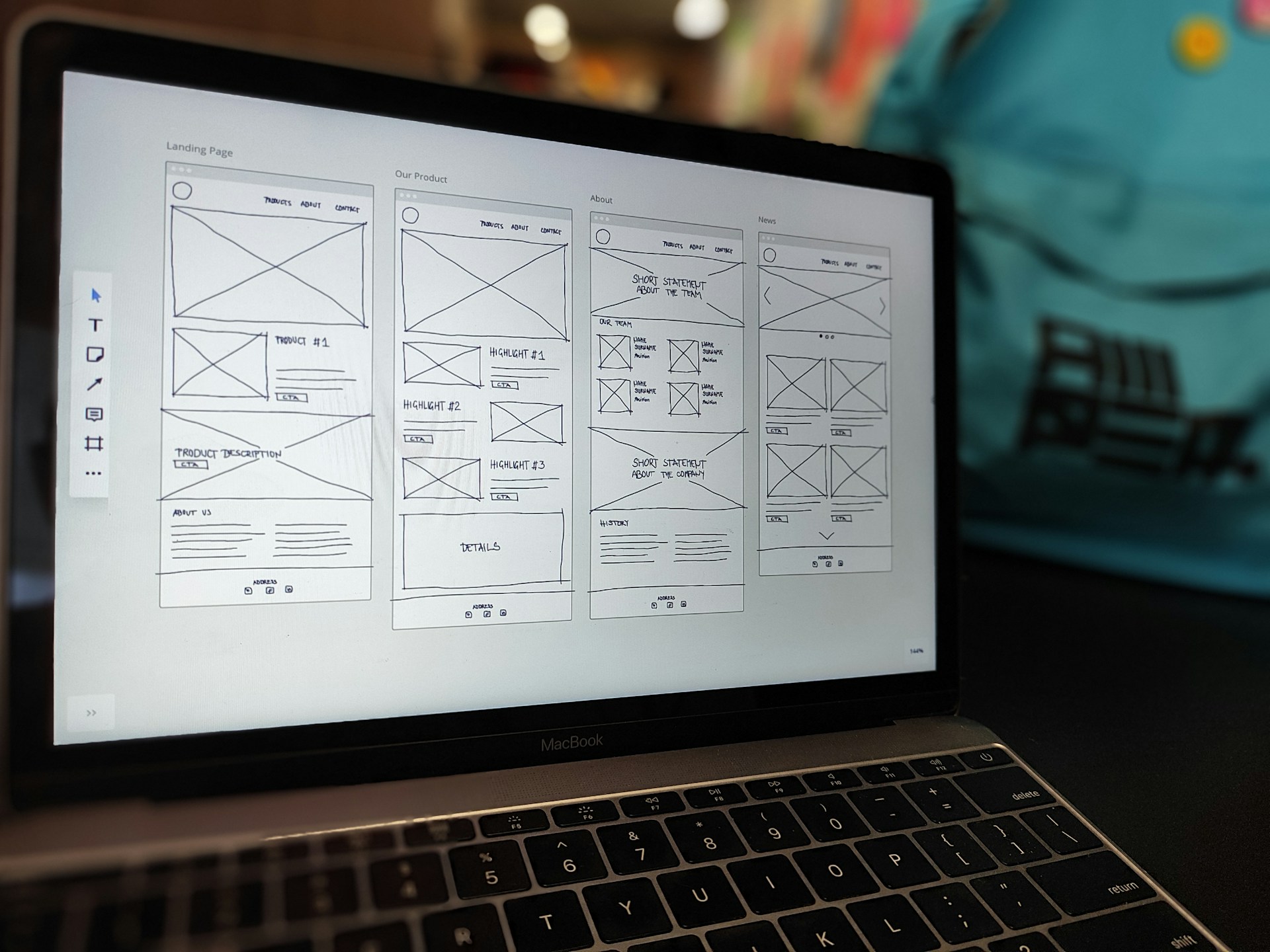A Strategic Approach to Website Redesign
A business’s online face is none other than its website, which, as an independent entity, continuously evolves with the brand. As you and your business enter new phases and as your goals refine, the thought inevitably arises from time to time: does my current website faithfully reflect all this? Has the time come for an update, or perhaps even a complete redesign?
But how can you know if it’s time for a change? And if so, what should you pay attention to ensure the renewal truly tells your unique story and isn’t just another template-based solution?
In this post, I’m seeking answers to these very questions with you. I’ll guide you through the key aspects worth considering during a website redesign – from three different but complementary perspectives: that of the designer, the developer, and the marketer. My goal is to help you make informed decisions and create an online presence that is not only aesthetic and modern but also faithfully reflects the soul of your brand and effectively supports its success. Join me!
Conscious Decisions for a Fresh and Modern Digital Footprint
Reimagining the Visual Essence: The Designer's Perspective
When we talk about redesigning a website, the first thought often relates to a visual refresh, and rightly so. Design is the silent language through which your brand first speaks to the visitor; it’s that subtle harmony that builds trust or, conversely, creates uncertainty in seconds. An appearance that no longer harmonizes with your brand’s current message, or appears outdated, can, however gently, create a distance between you and your visitors. But what does a designer who understands “quiet luxury” and deeper meaning focus on?

1. Fine-Tuning First Impressions: Timeless Elegance and Brand Identity
Your current website might have served you perfectly once, but the visual world is constantly changing.
How can you modernize the appearance so that it not only meets the latest trends but also radiates timeless elegance and faithfully represents your brand’s unique character and values?
The key lies in a deep understanding of your brand’s core values and their consistent visual representation. A well-defined style guide (mood board) and a curated yet characterful color palette can help ensure the design is both modern and timeless.
How can we choose colors, typography, and imagery that are aesthetic, tell your brand’s story, and also enhance its recognizability?
Besides considering the emotional impact of colors (see my previous article on color psychology) and your target audience’s preferences, it’s important that typography supports readability and reflects the brand’s personality (e.g., an elegant serif font for a sense of luxury, a clean sans-serif for modernity). The imagery, in turn, must be consistent and high-quality, reinforcing the desired mood.
2. The Intelligence of User Experience (UX): Intuitive Paths and Inner Harmony
The secret to a truly sophisticated website is that its aesthetic design and thoughtful functionality guide the user through the site almost invisibly.
How can we create an online experience where the visitor easily finds what they’re looking for, and where every interaction feels natural and straightforward?
Let’s start by mapping out user flows and establishing a logical information architecture. Clear menu items, a search function, and well-structured pages are indispensable.The creation of clean navigation structures, thoughtful page layout, the essential role of responsiveness (mobile-friendliness), and how design can create inner harmony between the user and the brand – all these contribute to ensuring the visitor doesn’t click around in frustration but joyfully discovers your site. Ample white space, for example, helps highlight content and achieve a calm overall impression.
3. The Refined Details of User Interface (UI): Where Intention Takes Form
Every tiny element – the shade of a button, the subtlety of an icon, the airiness of space between texts – contributes to the overall experience.
How can these details be composed so that they are functional and also reflect your brand’s true philosophy?
Consistency is key here: the use of uniform button styles, iconography, and visual elements suggests professionalism. The size, color, and placement of buttons, meanwhile, greatly influence click-through rates.
The conscious application of visual hierarchy, the elegant yet effective design of call-to-action (CTA) elements, and how typography and imagery can form a cohesive, calming, and inspiring user interface, all contribute to success. For instance, a CTA button with a contrasting color that still fits the palette grabs attention better, while well-chosen line spacing and font size improve readability and the design’s airiness.
4. Design for Everyone: The Importance of Thoughtful Design
A truly sophisticated and premium online presence is recognized by its consideration for every visitor. Ensuring your website is easy to use and enjoyable for everyone – regardless of ability – not only reflects thoughtfulness but also elevates the overall quality perception of the brand. This can mean small but important details like highly readable texts, logical structure, or appropriate descriptions for images.
The designer’s role, therefore, is to make the brand’s hidden essence visible and to create a visual and functional framework that makes the website attractive and easy to use. This framework must also resonate with the target audience on a deeper level and authentically communicate the brand’s true message.
The Power of Invisible Foundations: The Developer's Perspective
A clean web design and an intuitive user experience are fundamental, but true, long-term success also requires stable and reliable technical foundations. Development is the precise, expertise-driven background process that ensures your website operates smoothly, quickly, and securely, both today and in the future. But what does a developer focus on during a website redesign or update?

1. Updating Technological Foundations: Timeless and Effective Solutions
Perhaps your current website was built on older technology that now feels slow, difficult to update, or even vulnerable.
When is it worth considering a platform switch (e.g., to a more modern CMS, or even custom development), and what advantages might this offer in terms of performance and future scalability?
The choice depends on your long-term goals and the complexity of the site. A modern, well-maintained CMS system (like WordPress) offers excellent flexibility and scalability for most businesses, allowing your website to grow with you. The availability of regular updates and security protocols is also an important factor.
2. Optimal Performance: The Basis of a Fast and User-Friendly Website
In today’s fast-paced world, users expect a quick and seamless online experience. A slowly loading website can reduce visitor satisfaction and negatively impact search engine rankings. Our goal is to create a technical backend that ensures your website operates quickly and reliably on all devices, thereby contributing to a positive user experience.
This includes careful image optimization (appropriate size and format), clean and efficient coding (minimizing unnecessary scripts), the smart application of caching techniques, and optimizing server-side response time as well.
3. Mastering Responsiveness: Perfect Appearance on Every Screen
It’s a basic expectation today that a website displays perfectly and is easy to use on all devices – be it a smartphone, tablet, or large monitor. The developer’s task is to ensure this responsive operation flawlessly.
Why is this more than just “shrinking” the desktop version, and how can a truly adaptive interface, suited to all screen sizes, be designed and developed?
True responsiveness begins with a “mobile-first” approach, where we first design for smaller screens and then progressively enhance functionality for larger ones. Flexible layout grids (e.g., CSS Grid, Flexbox) and adaptive sizing of images are essential for a perfect appearance.
4. Security First: Protecting Your Website in the Digital Space
A website redesign is also an excellent opportunity to review and strengthen its security system.
What steps can we take to protect the site from malicious attacks and ensure the protection of user data?
An SSL certificate (HTTPS) is a basic requirement today, but regular software updates (CMS, plugins), the use of strong passwords, and the establishment of a reliable, automated backup strategy are also crucial. Together, these minimize security risks.
5. Maintainability and Future-Proofing: A Website That Evolves With You
A good developer thinks not only about the present but also about ensuring the website is easy to maintain and adaptable to future needs.
How can a system be built that you yourself can easily update (e.g., with new blog posts, products), or to which new functions can be seamlessly added?
A well-chosen and customized content management system (CMS), such as WordPress, allows you to manage your content easily without technical knowledge. A modular structure and clean code also facilitate later expansions and modifications.
In summary, the developer’s work provides the solid technical foundation upon which design and user experience can flourish, and which allows your website to reliably and effectively serve your goals.
The Message That Hits the Mark: The Marketer's Perspective
All this is well and good so far, but it’s worthless if potential customers can’t find you. A website redesign is an excellent opportunity to optimize our online presence from a marketing perspective as well. But what does a marketing-minded professional pay attention to ensure the revamped website truly supports business growth?

1. Deeper Understanding and Addressing of the Target Audience
A redesign offers the chance to define more precisely whom we are addressing.
Are you truly reaching your ideal clients with your current communication?
How can updated content and design help you resonate better with their needs, desires, and problems?
The key lies in detailed target audience research and the creation of buyer personas; it’s important to dedicate time to this. If you know exactly whom you’re talking to, what their language is, and on which channels you can reach them, then you can create textual and visual content that truly speaks to them and builds trust.
2. The Perfect Value Proposition and Its Communication
Ask yourself these questions:
What makes your brand unique?
What specific value do you offer your clients?
A redesigned website must communicate this crystal clearly and convincingly.
It’s worth summarizing on the homepage, in a highly visible spot (above the fold), what you do and how you differ from competitors in a short, impactful sentence. And in your service descriptions, emphasize not just the features, but the concrete benefits the client will receive (e.g., more time, less stress, a more professional appearance).
3. Search Engine Optimization (SEO) Basics on the New Site
A redesign shouldn’t erase previous SEO results; in fact, it should improve them!
How can you ensure your revamped site performs well in Google and other search engine rankings?
Keyword research should begin in the planning phase, and relevant keywords should be incorporated into page titles, meta descriptions, and content. Additionally, technical SEO (speed, mobile-friendliness, correct URL structure) and setting up 301 redirects from old URLs to new ones are essential to preserve and improve previous rankings.
4. Optimizing Conversion Points (CTAs and Landing Pages)
Your website must serve specific goals, whether it’s inquiries, sign-ups, or purchases.
How can call-to-action (CTA) elements and landing pages be designed to convert as many visitors as possible into leads or customers?
CTA buttons should be contrasting, attention-grabbing (this is where color psychology comes in!), and their text should clearly encourage action (e.g., “Request a Quote Now!”, “Download the Free Guide!”). Trust-building elements like client testimonials, case studies, or guarantees can also increase conversion rates.
5. Content Marketing and the Role of the Blog on the New Site
Valuable, informative content is one of the best ways to build expert status and attract visitors.
How can a blog and other content formats be effectively integrated into the new website?
A regularly updated blog optimized for relevant keywords not only strengthens your SEO but also gives you the opportunity to build a deeper connection with your readers and showcase your expertise. And you can easily share your blog posts on social media platforms, thereby increasing your reach and client retention.
6. Analytics and Measurement: The Path of Data-Driven Development
How do you know if your redesigned website is truly performing better?
An essential part of a marketing mindset is measuring results and continuously fine-tuning based on data.
Setting up and regularly monitoring Google Analytics is fundamental. It helps you track visitor numbers, their behavior on the site, conversion rates, and identify areas needing further optimization.
The marketer’s perspective, therefore, is about how an aesthetically designed and perfectly functioning website becomes a real business tool: how it persuades ideal clients and how it measurably contributes to your business’s growth.
Conclusion: The Opportunity for a New Beginning – More Than Just a Fresh Design
As you could see, redesigning a website is indeed an exciting and multifaceted process. It’s not enough to simply update the external appearance; lasting success requires strategic thinking, a deep understanding of the target audience, thoughtful design work, stable technical foundations, and the collective presence of an effective marketing mindset.
In my approach, these areas are closely intertwined and reinforce each other to contribute to an outstanding end result. Whether it’s planning, development, or the conscious consideration of marketing aspects, you can count on my expertise and personal attention.
A successfully redesigned website, therefore, will not only be more beautiful but will also:
- More accurately communicate who you are and what you represent, thereby strengthening your brand’s message.
- Provide an outstanding user experience, which increases visitor satisfaction and time spent on the website.
- More effectively help turn interested parties into your clients.
- Reliably support the growth and success of your business in the long term.
A redesign is a fantastic opportunity for renewal, fine-tuning your brand, and for truly elevating your online presence to a new level. Conscious planning and a comprehensive professional approach are indispensable for success in this process.
Are You Ready for Your Website to Open a New Chapter?
Feel free to reach out! In a personal consultation, I’d be happy to discuss your ideas and goals with you, and together we can explore how we can create a website true to your brand, representing the highest professional and aesthetic standards.




